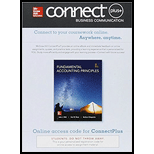
1)
Introduction:
Analysis of Financial Statements
• Analysis of Financial Statements is a study of several key metrics of a company based on the data presented in its’ financial statements with an objective to evaluate the financial health of a company.
• It is essential for investors, stakeholders, government bodies etc. to evaluate the key metrics of an entity in order to ensure that the company fulfills the going concern principle and displays financial stability.
The key metrics mentioned above include the following:
• Horizontal Analysis – Refers to comparison of the figures of the components of financial statements across the figures for the previous years to determine favorable or unfavorable trends
• Vertical analysis - Refers to comparison of the figures of the components of financial statements against each other in order to determine relative composition of the components in relation to the total
To Determine:
Meaning of horizontal and vertical analysis with examples
2)
Introduction:
Ratio Analysis
• Ratio analysis is a study of several key metrics of a company based on the data presented in its’ financial statements with an objective to evaluate the financial health of a company.
• It is essential for investors, stakeholders, government bodies etc. to evaluate the key metrics of an entity in order to ensure that the company fulfills the going concern principle and displays financial stability.
The key metrics mentioned above include the following:
• Equity Ratio – It is a measure of the total equity component out of the total capital employed by an entity that comprises of both debt and equity
• Return on Total Assets – A measure of the return earned by the shareholders on the total assets employed. It is an indicator of profitability in relation to the assets.
• Dividend Yield Ratio – It is a measure of the total dividend earned by the equity shareholder in relation to the shares held.
• Book Value per Share – It is a measure of the actual book value or
• Days’ sales in inventory – A measure of the total outstanding collections for credit sales in terms of inventory. It is calculated to understand how many days the company holds inventory before selling it
•
• Debt Equity Ratio – A Measure of the total debt used to leverage the business in relation to the percentage of equity.
• Times Interest earned Ratio – A measure of the total income and the total interest payments made by the business. It seeks to measure how much of the earnings can finance interest costs and at what multiple. The higher the ratio, the better.
• Gross Margin Ratio – A measure of the gross margin earned from the turnover for the reporting period.
• Acid Test Ratio – Also known as quick ratio, it seeks to measure the liquidity position of the business.
To Prepare:
Ratios relating to the following building blocks of financial analysis:
• Liquidity And Efficiency
• Solvency,
• Profitability,
• Market Prospects
Want to see the full answer?
Check out a sample textbook solution
Chapter 17 Solutions
Connect 2-Semester Access Card for Fundamental Accounting Principles
- A trial balance includes:A. Only revenue and expense accountsB. All accounts with balancesC. Only permanent accountsD. Only assets and liabilitiesarrow_forwardThe matching principle helps ensure:A. Revenues are equal to expensesB. Revenues and related expenses are recorded in the same periodC. Cash is matched to liabilitiesD. Accounts match physical inventoryneed helparrow_forwardThe matching principle helps ensure:A. Revenues are equal to expensesB. Revenues and related expenses are recorded in the same periodC. Cash is matched to liabilitiesD. Accounts match physical inventoryarrow_forward

 AccountingAccountingISBN:9781337272094Author:WARREN, Carl S., Reeve, James M., Duchac, Jonathan E.Publisher:Cengage Learning,
AccountingAccountingISBN:9781337272094Author:WARREN, Carl S., Reeve, James M., Duchac, Jonathan E.Publisher:Cengage Learning, Accounting Information SystemsAccountingISBN:9781337619202Author:Hall, James A.Publisher:Cengage Learning,
Accounting Information SystemsAccountingISBN:9781337619202Author:Hall, James A.Publisher:Cengage Learning, Horngren's Cost Accounting: A Managerial Emphasis...AccountingISBN:9780134475585Author:Srikant M. Datar, Madhav V. RajanPublisher:PEARSON
Horngren's Cost Accounting: A Managerial Emphasis...AccountingISBN:9780134475585Author:Srikant M. Datar, Madhav V. RajanPublisher:PEARSON Intermediate AccountingAccountingISBN:9781259722660Author:J. David Spiceland, Mark W. Nelson, Wayne M ThomasPublisher:McGraw-Hill Education
Intermediate AccountingAccountingISBN:9781259722660Author:J. David Spiceland, Mark W. Nelson, Wayne M ThomasPublisher:McGraw-Hill Education Financial and Managerial AccountingAccountingISBN:9781259726705Author:John J Wild, Ken W. Shaw, Barbara Chiappetta Fundamental Accounting PrinciplesPublisher:McGraw-Hill Education
Financial and Managerial AccountingAccountingISBN:9781259726705Author:John J Wild, Ken W. Shaw, Barbara Chiappetta Fundamental Accounting PrinciplesPublisher:McGraw-Hill Education





